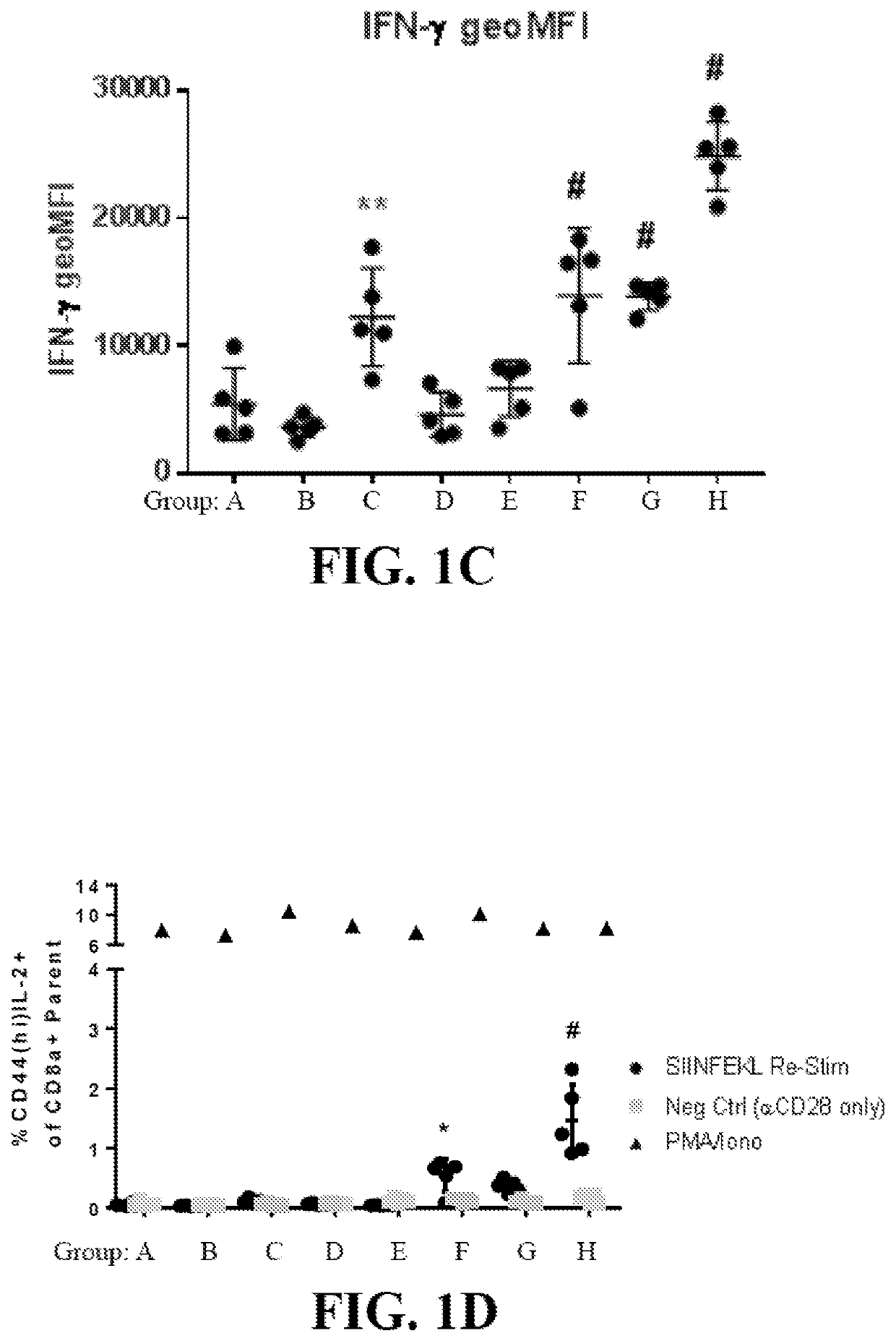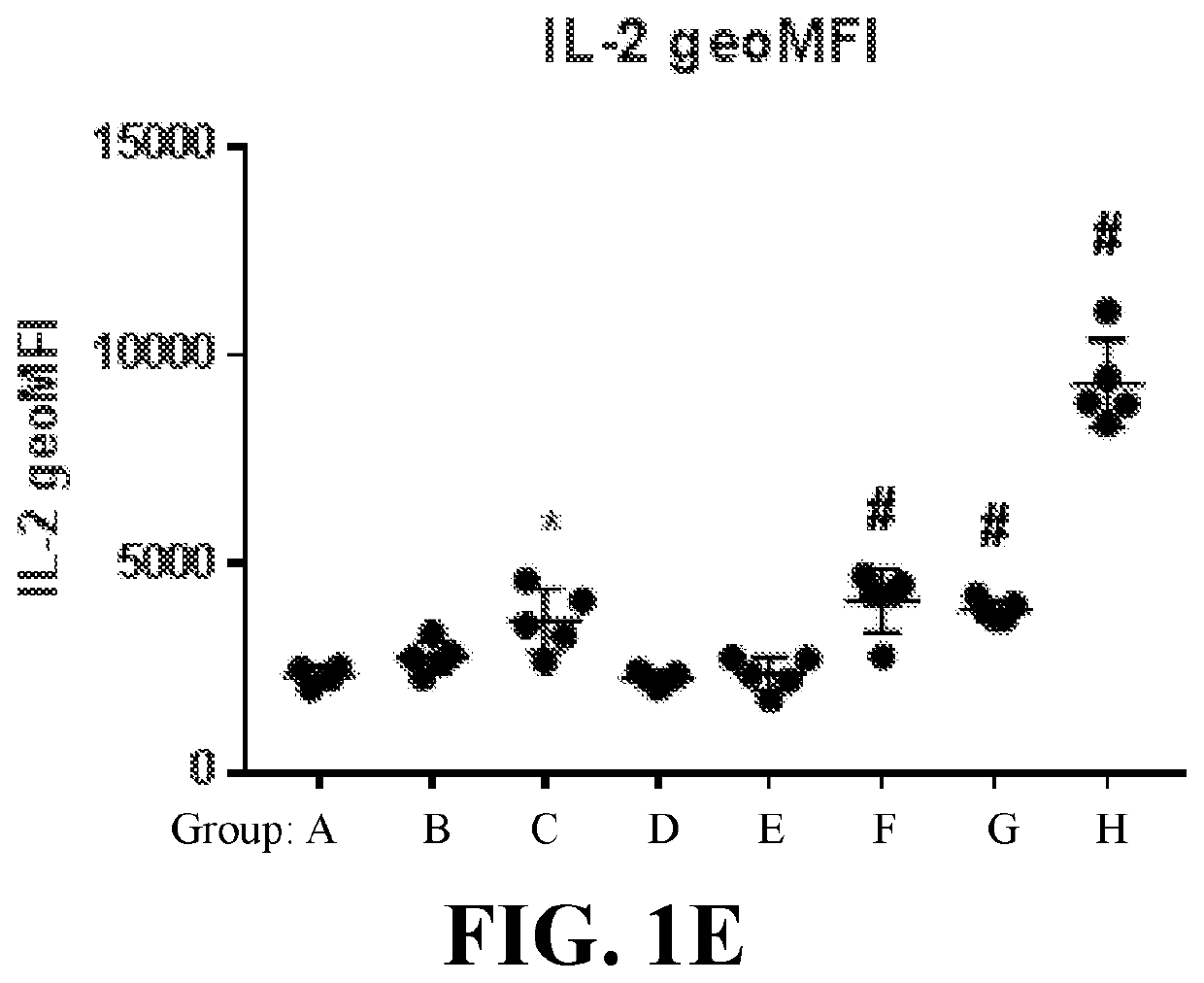Anucleate cell-derived vaccines
- Summary
- Abstract
- Description
- Claims
- Application Information
AI Technical Summary
Benefits of technology
Problems solved by technology
Method used
Image
Examples
example 1
[0825]This example demonstrates, in part, that anucleate cell-derived vesicles comprising loaded antigen and / or adjuvant can induce an in vivo antigen-specific immune response.
Materials and Methods
[0826]To determine in vivo antigen-specific immune response, cell-derived vesicles treated according to the conditions in Table 1, such as red blood cell-derived vesicles loaded with a model antigen and / or adjuvant, were administered to mice and then the number of antigen-specific T cells and the levels of inflammatory cytokines, IFN-γ and IL-2, were measured by flow cytometry. Specifically, red blood cells (RBCs) were obtained from C57BL / 6J donor mice, and loaded intracellularly with a fluorescently-tagged IgG antibody (IgG488, 20 μg / mL), Ova protein (200 μg / mL), and / or polyinosinic:polycytidylic acid (poly I:C) (300 μg / mL), with or without systemic treatment with free Ova (10 μg / mouse) and / or poly I:C (25 μg / mouse), according to Groups A-H (5 mice / group) detailed in Table 1. In Table 1, ...
example 2
[0829]This example demonstrates, in part, that different doses of anucleate cell-derived vesicles comprising loaded antigen and / or adjuvant can induce varying levels of an in vivo antigen-specific immune response. Specifically, higher doses of anucleate cell-derived vesicles comprising loaded antigen and / or adjuvant can induced a greater in vivo antigen-specific immune response.
Materials and Methods
[0830]To determine in vivo antigen-specific immune response, cell-derived vesicles treated according to the conditions in Table 2, such as red blood cell-derived vesicles loaded with a model antigen and / or adjuvant, were administered to mice and then the number of antigen-specific T cells and the levels of inflammatory cytokines, IFN-γ and IL-2, were measured by flow cytometry. Specifically, red blood cells (RBCs) were obtained from C57BL / 6J donor mice, and loaded with a fluorescently-tagged IgG antibody (IgG488, 20 μg / mL), Ova protein (200 μg / mL) and / or poly I:C (300 μg / mL), with or with...
example 3
[0833]This example demonstrates, in part, the effect of using different adjuvants or dosing strategies on in vivo antigen-specific immune response.
Materials and Methods
[0834]To determine in vivo antigen-specific immune response, cell-derived vesicles treated according to the conditions in Table 3, such as red blood cell-derived vesicles loaded with a model antigen and / or adjuvant, were administered to mice and then the number of antigen-specific T cells and the levels of inflammatory cytokines, IFN-γ and IL-2, were measured by flow cytometry. Specifically, red blood cells were obtained from C57BL / 6J donor mice, and loaded with a fluorescently-tagged IgG antibody (IgG488, 20 μg / mL), Ova protein (200 μg / mL) and / or an adjuvant (either poly I:C (300 or 3000 μg / mL), lipopolysaccharide (LPS, 300 μg / mL), or R848 (100 μg / mL)) at varying doses and prime-boost schedules, according to the groups (5 mice / group) as detailed in Table 3.
TABLE 3Treatment groups.RBCs perAdjuvant SQZGroupCondition*an...
PUM
| Property | Measurement | Unit |
|---|---|---|
| Length | aaaaa | aaaaa |
| Length | aaaaa | aaaaa |
| Length | aaaaa | aaaaa |
Abstract
Description
Claims
Application Information
 Login to View More
Login to View More - R&D
- Intellectual Property
- Life Sciences
- Materials
- Tech Scout
- Unparalleled Data Quality
- Higher Quality Content
- 60% Fewer Hallucinations
Browse by: Latest US Patents, China's latest patents, Technical Efficacy Thesaurus, Application Domain, Technology Topic, Popular Technical Reports.
© 2025 PatSnap. All rights reserved.Legal|Privacy policy|Modern Slavery Act Transparency Statement|Sitemap|About US| Contact US: help@patsnap.com



